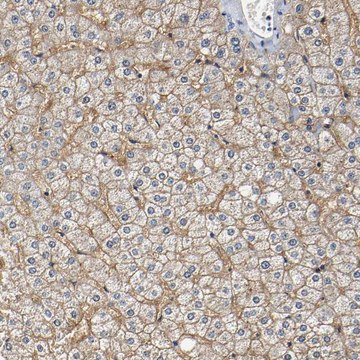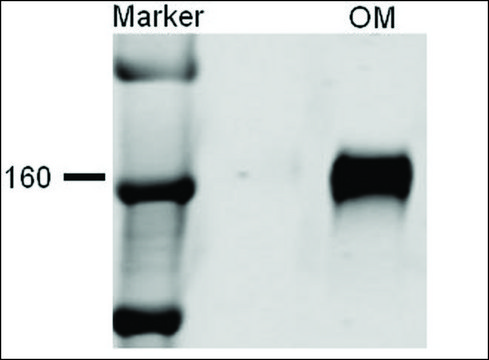168024K
MAPTRIX-V-KKQRFRHRNRKGY
Vitronectin Mimetic, aqueous solution
About This Item
sterility
Filtered sterilized solution
form
aqueous solution
mol wt
~24.7 kDa
packaging
pkg of 10 mg
concentration
1.0 mg/mL protein
technique(s)
cell culture | mammalian: suitable
Binding Specificity
Receptor: Heparin
Domain: HBV
Binding Motif: KKQRFRHRNRKGYRSQ
shipped in
ambient
storage temp.
2-8°C
1 of 4
This Item | SAB2102228 | SAB4300781 | SAB5200103 |
|---|---|---|---|
| conjugate unconjugated | conjugate unconjugated | conjugate - | conjugate unconjugated |
| biological source rabbit | biological source rabbit | biological source rabbit | biological source rabbit |
| Quality Level 100 | Quality Level 100 | Quality Level 100 | Quality Level 100 |
| antibody form affinity isolated antibody | antibody form affinity isolated antibody | antibody form affinity isolated antibody | antibody form affinity isolated antibody |
| product line Prestige Antibodies® Powered by Atlas Antibodies | product line - | product line - | product line - |
| Gene Information human ... SLCO2B1(11309) | Gene Information human ... SLCO2B1(11309) | Gene Information human ... SLCO1B1(10599) | Gene Information rat ... Slc12a1(25065) |
Application
Features and Benefits
- Biochemically-defined, animal-free cell culture surfaces designed to enhance cell performance
- MAPTrix™ produces a uniform ECM surface that provides a highly controlled 2D extracellular microenvironment for cell cultures and related applications
- Adhesion properties of the mussel adhesive protein makes the coating reproducible & reliable
Legal Information
Storage Class Code
10 - Combustible liquids
Flash Point(F)
Not applicable
Flash Point(C)
Not applicable
Choose from one of the most recent versions:
Certificates of Analysis (COA)
It looks like we've run into a problem, but you can still download Certificates of Analysis from our Documents section.
If you need assistance, please contact Customer Support
Already Own This Product?
Find documentation for the products that you have recently purchased in the Document Library.
Our team of scientists has experience in all areas of research including Life Science, Material Science, Chemical Synthesis, Chromatography, Analytical and many others.
Contact Technical Service


